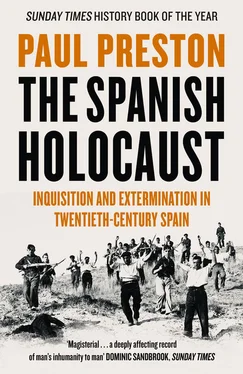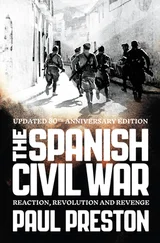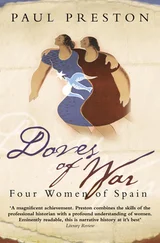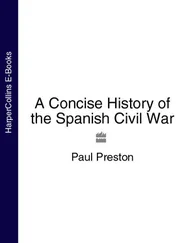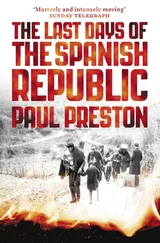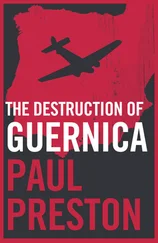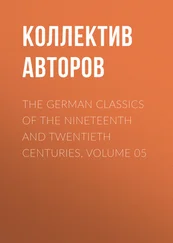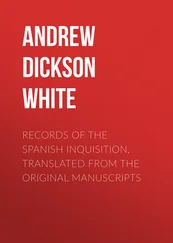The statistical vision of the Spanish holocaust is not only flawed, incomplete and unlikely ever to be complete. It also fails to capture the intense horror that lies behind the numbers. The account that follows includes many stories of individuals, of men, women and children from both sides. It introduces some specific but representative cases of victims and perpetrators from all over the country. It is hoped thereby to convey the suffering unleashed upon their own fellow citizens by the arrogance and brutality of the officers who rose up on 17 July 1936. They provoked a war that was unnecessary and whose consequences still reverberate bitterly in Spain today.
PART ONE
Social War Begins, 1931–1933
On 18 July 1936, on hearing of the military uprising in Morocco, an aristocratic landowner lined up the labourers on his estate to the south-west of Salamanca and shot six of them as a lesson to the others. The Conde de Alba de Yeltes, Gonzalo de Aguilera y Munro, a retired cavalry officer, joined the press service of the rebel forces during the Civil War and boasted of his crime to foreign visitors. 1Although his alleged atrocity was extreme, the sentiments behind it were not unrepresentative of the hatreds that had smouldered in the Spanish countryside over the twenty years before the military uprising of 1936. Aguilera’s cold and calculated violence reflected the belief, common among the rural upper classes, that the landless labourers were sub-human. This attitude had become common among the big landowners since a series of sporadic uprisings by hungry day-labourers in the regions of Spain dominated by huge estates (latifundios). Taking place between 1918 and 1921, a period of bitter social conflict known thereafter as the trienio bolchevique (three Bolshevik years), these insurrections had been crushed by the traditional defenders of the rural oligarchy, the Civil Guard and the army. Previously, there had been an uneasy truce within which the wretched lives of the landless day-labourers (jornaleros or braceros) were occasionally relieved by the patronizing gestures of the owners – the gift of food or a blind eye turned to rabbit poaching or to the gathering of windfall crops. The violence of the conflicts had outraged the landlords, who would never forgive the insubordination of the braceros they considered to be an inferior species. Accordingly, the paternalism which had somewhat mitigated the daily brutality of the day-labourers’ lives came to an abrupt end.
The agrarian oligarchy, in an unequal partnership with the industrial and financial bourgeoisie, was traditionally the dominant force in Spanish capitalism. Its monopoly of power began to be challenged on two sides in the course of the painful and uneven process of industrialization. The prosperity enjoyed by neutral Spain during the First World War emboldened industrialists and bankers to jostle with the great landowners for political position. However, with both menaced by a militant industrial proletariat, they soon rebuilt a defensive alliance. In August 1917, the left’s feeble revolutionary threat was bloodily smothered by the army. Thereafter, until 1923, when the army intervened again, social ferment occasionally bordered on undeclared civil war. In the south, there were the rural uprisings of the ‘three Bolshevik years’. In the north, the industrialists of Catalonia, the Basque Country and Asturias, having tried to ride the immediate post-war recession with wage-cuts and layoffs, faced violent strikes and, in Barcelona, a terrorist spiral of provocations and reprisals.
In the consequent atmosphere of uncertainty and anxiety, there was a ready middle-class audience for the notion long since disseminated by extreme right-wing Catholics that a secret alliance of Jews, Freemasons and the Communist Third International was conspiring to destroy Christian Europe, with Spain as a principal target. In Catholic Spain, the idea that there was an evil Jewish conspiracy to destroy Christianity had emerged in the early Middle Ages. In the nineteenth century, the Spanish extreme right resurrected it to discredit the liberals whom they viewed as responsible for social changes that were damaging their interests. In this paranoid fantasy, Freemasons were smeared as tools of the Jews (of whom there were virtually none) in a sinister plot to establish Jewish tyranny over the Christian world.
As the nineteenth century drew to a close, such views were expressed with ever increasing vehemence. They were a response to the kaleidoscopic processes of rapid economic growth, social dislocation, regionalist agitations, a bourgeois reform movement and the emergence of trade unions and left-wing parties. An explanation for the destabilization of Spanish society and the attendant collapse of the relative certainties of a predominantly rural society was found in a deeply alarming, yet somehow comforting, assertion that shifted the blame on to an identifiable and foreign enemy. It was alleged that, using Freemasons as their willing intermediaries, the Jews controlled the economy, politics, the press, literature and the entertainment world through which they propagated immorality and the brutalization of the masses. Such views had long been peddled by El Siglo Futuro, the daily newspaper of the deeply reactionary Carlist Traditionalist Communion. In 1912, the National Anti-Masonic and Anti-Semitic League had been founded by José Ignacio de Urbina with the support of twenty-two Spanish bishops. The Bishop of Almería wrote that ‘everything is ready for the decisive battle that must be unleashed between the children of light and the children of darkness, between Catholicism and Judaism, between Christ and the Devil’. 2That there was never any hard evidence was put down to the cleverness and colossal power of the enemy, evil itself.
In Spain, as in other European countries, anti-Semitism had reached even greater intensity after 1917. It was taken as axiomatic that socialism was a Jewish creation and that the Russian revolution had been financed by Jewish capital, an idea given a spurious credibility by the Jewish origins of prominent Bolsheviks such as Trotsky, Martov and Dan. Spain’s middle and upper classes were chilled, and outraged, by the various revolutionary upheavals that threatened them between 1917 and 1923. The fears of the elite were somewhat calmed in September 1923, when the army intervened again and a dictatorship was established by General Miguel Primo de Rivera. As Captain General of Barcelona, Primo de Rivera was the ally of Catalan textile barons and understood their sense of being under threat from their anarchist workforce. Moreover, coming from a substantial landowning family in Jérez, he also appreciated the fears of the big southern landowners or latifundistas. He was thus the ideal praetorian defender of the reactionary coalition of industrialists and landowners consolidated after 1917. While Primo de Rivera remained in power, he offered security to the middle and upper classes. Nevertheless, his ideologues worked hard to build the notion that in Spain two bitterly hostile social, political and, indeed, moral groupings were locked in a fight to the death. Specifically, in a pre-echo of the function that they would also fulfil for Franco, these propagandists stressed the dangers faced from Jews, Freemasons and leftists.
These ideas essentially delegitimized the entire spectrum of the left, from middle-class liberal democrats, via Socialists and regional nationalists, to anarchists and Communists. This was done by blurring distinctions between them and by denying their right to be considered Spanish. The denunciations of this ‘anti-Spain’ were publicized through the right-wing press and the regime’s single party, the Unión Patriótica, as well as through civic organizations and the education system. These notions served to generate satisfaction with the dictatorship as a bulwark against the perceived Bolshevik threat. Starting from the premise that the world was divided into ‘national alliances and Soviet alliances’, the influential right-wing poet José María Pemán declared that ‘the time has come for Spanish society to choose between Jesus and Barabbas’. He claimed that the masses were ‘either Christian or anarchic and destructive’ and the nation was divided between an anti-Spain made up of everything that was heterodox and foreign and the real Spain of traditional religious and monarchical values. 3
Читать дальше
